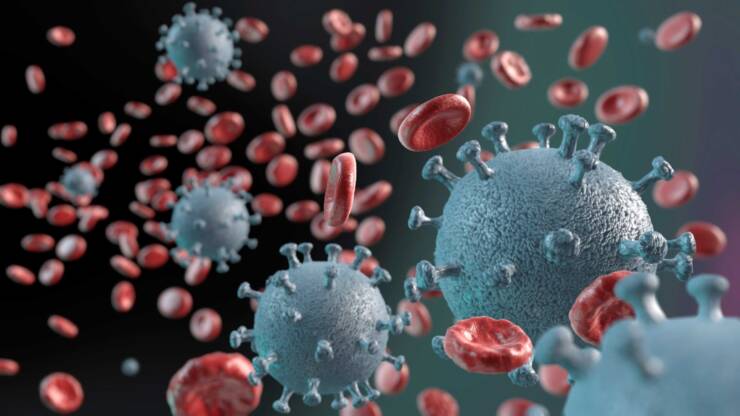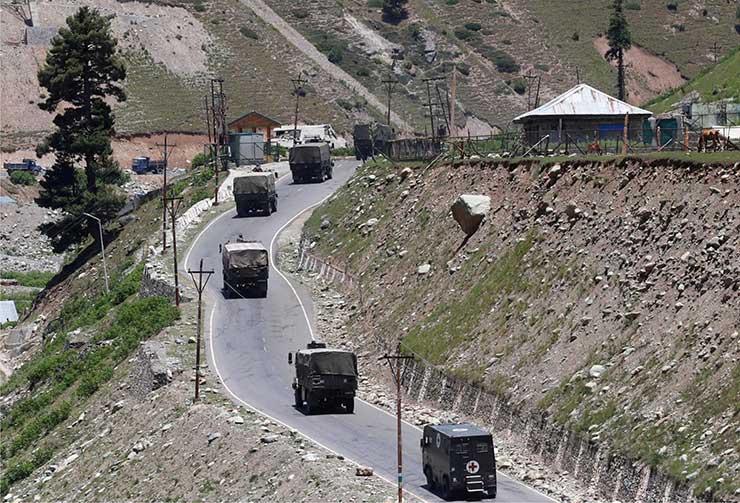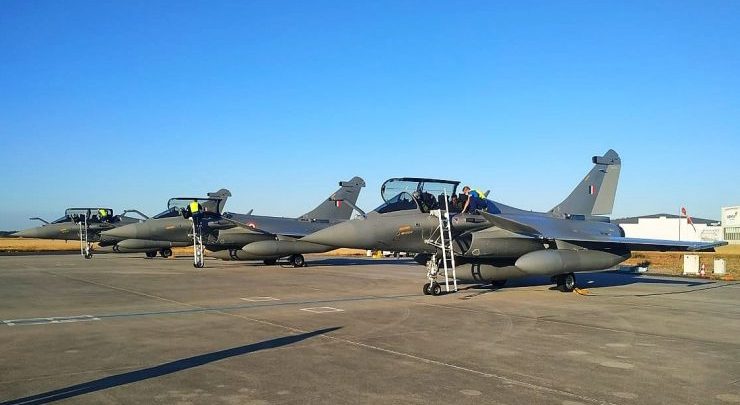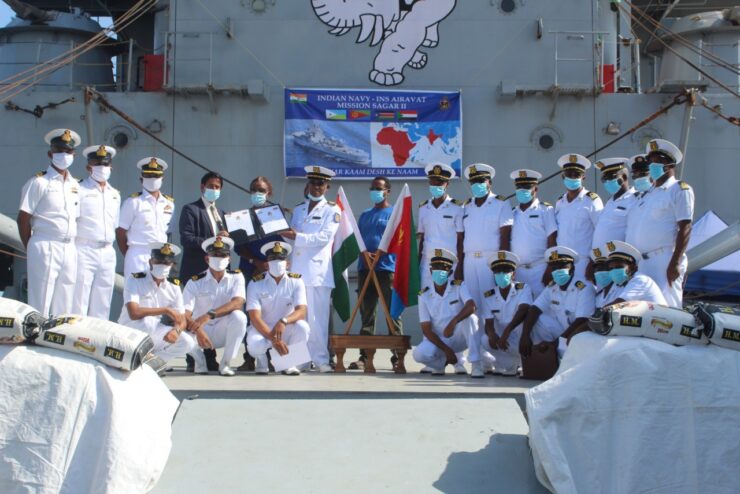
Undeterred by the terrible pandemic that even now continues to sweep the country with its origins from Wuhan, China, it was the armed forces who not only defended the nation’s boundaries but also lent humanitarian assistance to the civilian population.
The armed forces ensured that despite the Chinese People’s Liberation Army (PLA) by its unilateral and provocative actions and using “unorthodox weapons and amassing large number of troops,” to change the status quo in more than one area on the Line of Actual Control (LAC), were responded to in a firm and non-escalatory way, ensuring the sanctity of India’s claims in Eastern Ladakh.
As the year end review of the Defence Ministry said, “Indian Army has maintained all protocols and Agreements between the two countries while the PLA escalated the situation by utilisation of unorthodox weapons and amassing large number of troops. Indian Army with assistance from IAF mobilised troops including accretionary forces in a very short duration including heavy equipment like guns, tanks as also ammunition, rations and clothing.”
With a land border of about 6,800 km with China and Pakistan, the armed forces were kept busy almost through the year on both fronts with the Sino-Indian border in Eastern Ladakh seeing a sudden aggressive China’s People’s Liberation Army leading to clashes in which 20 Indian soldiers were killed with Chinese too suffering casualties which as was the case, the country maintained silence though reports indicated that it was more than the Indian side.

On the Indo-Pakistan border, the terrorists continued to be encouraged by Pakistan keeping the Indian security forces active and specially so after Jammu and Kashmir was made a Union Territory with the abrogation of Article 370.
The year began with a momentous decision in Indian Defence history with the setting up of the Department of Military Affairs and the creation of the post of Chief of Defence Staff (CDS) and the outgoing Army Chief General Bipin Rawat appointed as the first CDS who was made Principal Military Advisor to the Defence Minister on all Tri-Services matters.
The air power of the country got a major boost this year with the induction of eight Rafale aircraft which were operationalised on September 20, giving a boost to the Indian Air Force and is a game changer for India’s national security. The year saw the air version of supersonic BrahMos Air missile integrated on Su-30MKI aircraft.

One of the major positives that emerged from the havoc created to the nation’s economy by the Covid-19 pandemic was for the defence sector as the government sought to turn the crisis into an opportunity with Prime Minister Narendra Modi focussing on Atmanirbhar Bharat Abhiyaan to put the economy on high growth trajectory.
Aligning with the vision of Atmanirbhar Bharat, Defence Acquisition Procedure 2020 (DAP 2020) was unveiled aimed at boosting the growing domestic industry and achieve enhanced self-reliance in defence manufacturing.
To bolster self-reliance for its defence industrial base, the government issued a list of 101 weapons and platforms that will be banned from import over the next seven years.
The list incorporates major armaments such as artillery guns, assault rifles, corvettes, sonar systems, transport aircraft, ammunition, radars, conventional diesel-electric submarines, communication satellites and ship-borne cruise missiles.
The government unveiled the Defence Offset Guidelines 2020 to attract investments and technology through offsets to enhance capabilities in the domestic Defence manufacturing sector and promote the “Make in India” initiative.
The year saw the celebration of ‘Atma Nirbharta’ week from August 7 to 14 to promote indigenous development of materials and equipment to achieve Self-reliance in Defence manufacturing. Modernization/ upgradation of facilities and new infrastructure creation by Defence PSUs and Ordnance Factories Board (OFB) were launched. As part of this drive, Foreign Direct Investment limit in defence manufacturing under automatic route was raised from 49 per cent to 74 per cent.
The country’s military might got a massive boost as the leading research organisation, DRDO, in pursuit of self-reliance successfully developed and produced indigenously strategic systems and platforms such as Agni and Prithvi series of missiles; Light Combat Aircraft (LCA) Tejas; Multi-barrel Rocket Launcher (MBRL) Pinaka; Air Defence System Akash; a wide range of radars and electronic warfare systems.
With increasing threats along the borders, the year witnessed the government focussing on rapid development of infrastructure specially roads to link the border outposts in mountainous terrains. In this regard, Border Roads Organisation (BRO) continued with works of strategic importance like Construction of Major Bridges, Roads, Tunnels and Snow Clearance for opening of Strategic Mountain Passes braving Covid-19 threat.
World’s Longest Highway tunnel – Atal Tunnel built by BRO was dedicated to the nation by Prime Minister Modi on October 3 while on May 20, the 80-kilometre-long Road link from Dharchula (Uttarakhand) to Lipulekh (China Border) was inaugurated.
Undeterred by the pandemic, the year saw the construction of 44 Bridges of strategic importance in sensitive areas close to Western, Northern and North Eastern Borders, across seven States and UTs which opened on October 12.
It was a year which saw the defence industry getting a boost, the 11th edition of India’s biennial military exhibition, DefExpo was held in Lucknow, Uttar Pradesh, which showcased the potential of the country as a global defence manufacturing hub. More than 1,000 defence manufacturers and 150 companies from all over the world took part in this Expo.
The year witnessed the Armed Forces playing a pivotal role in mitigating the sufferings of the people in the face of novel Coronavirus (COVID-19). Right from rescuing stranded Indians from COVID-19 affected areas, such as China, Iran, Italy, Malaysia, to providing relief materials to all across the country, Armed Forces put in place all its medical and manpower resources. Hospitals of the Armed Forces and medical facilities have been dedicated to treat COVID-19 patients and some of its bases were turned into quarantine centres.

While the Army was engaged in guarding the land frontiers, the Indian Navy too continued to play a key role in defending the maritime boundary.
It carried out Operation Sankalp amid growing US – Iran tensions in the Gulf region, and since June 2019, the Navy undertook Maritime Security Operation in the Gulf Region to ensure safe passage of Indian Flag Merchant Vessels (IFMVs) transiting through the Strait of Hormuz. Since execution, IN has deployed 16 warships and escorted approximately 161 Lakh Tonnes of cargo onboard 156 IFMVs, giving a sense of reassurance to seafarers, and protecting Indian owned hulls and the trade embarked on them.
The Navy also carried out exercises with several of their foreign counterparts putting into operation all the Standard Operating Procedures (SOPs) needed as the pandemic was sweeping the world.
It also provided assistance to several foreign governments – Madagascar, Mauritius, Philippines, Maldives, Seychelles and Sri Lanka.
The year also observed the launching of Phase-II of Modernisation of Airfield Infrastructure (MAFI) with the inking of contract on May 8 for 37 airfields by the Ministry of Defence with M/s Tata Power SED (TPSED) at a cost of Rs 1189.44 crore. The up-gradation of navigational aids and infrastructure under this project enhances the operational capability by facilitating air operations of military and civil aircraft even in poor visibility and adverse weather while enhancing Aerospace Safety. The MAFI Phase-I project was completed on December 15, 2019 which involved modernisation of 30 airfields of Indian Air Force. The 37 airfields of MAFI Phase-II include 24 of Indian Air Force (IAF), nine of Indian Navy (IN), and four of other services.
MAFI project is a turnkey project that includes installation and commissioning of modern airfield equipment like Cat-II Instrument Landing System (ILS) and Cat-II Air Field Lighting System (AFLS) etc. The modern equipment around the airfield is directly connected to Air Traffic Control (ATC), thereby providing excellent control of the airfield systems to the Air Traffic Controllers. The up-gradation of navigational aids and infrastructure under this project enhances the operational capability by facilitating air operations of military and civil aircraft even in poor visibility and adverse weather while enhancing Aerospace Safety.
-The writer is senior journalist and media consultant








